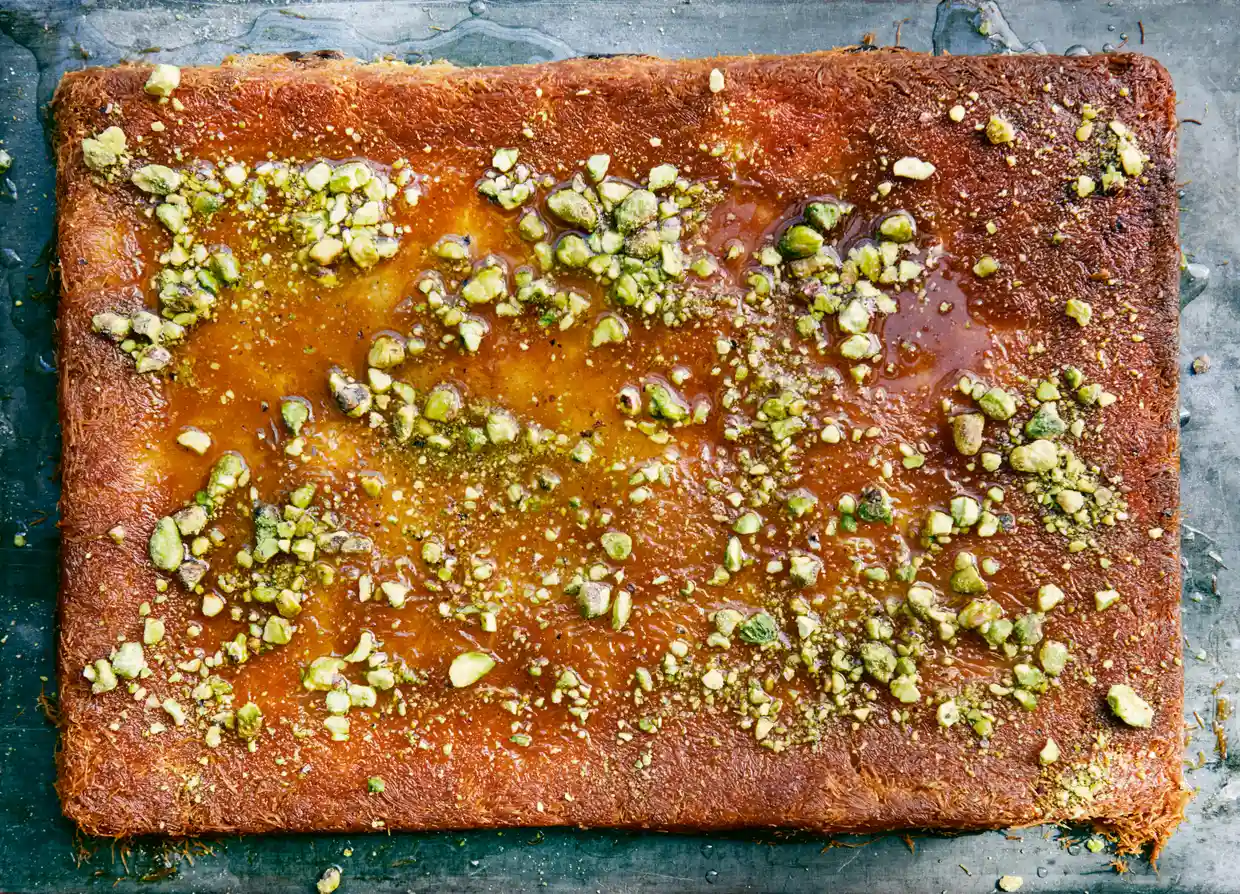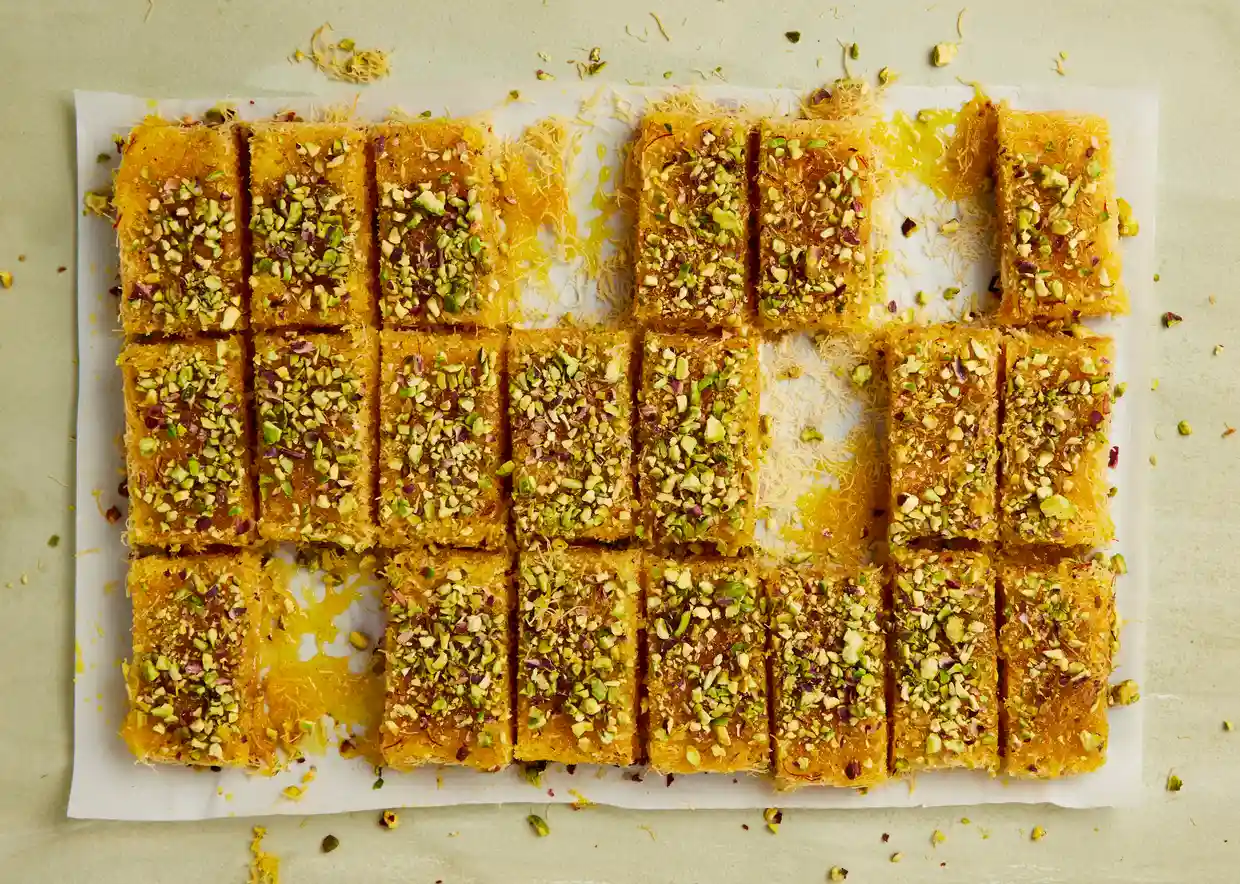Knafeh
- rosemary
- Apr 16, 2023
- 4 min read

The picture above is from the latest Coles Magazine and featured in their Cooking Club segment - in which one of the' ordinary' people who participate in that - shares some of their recipes. This month it was the turn of Fatimah Arafeh - an immigrant from Syria and the segment kicked off with this stunning picture of Creamy knafeh with sugar syrup. When you look at the recipe you find that it's pretty simple and maybe not quite as stunning as it looks, although I'm willing to give it a go sometime.
It's a really good example though of how one thing can take you into different places.
Knafeh - or all the other similar names this particular dish is known by is typically associated with Ramadan. It's a festive treat of a dessert particularly at Eid - the end of Ramadan festival. It's also an ancient dish although nobody really knows how ancient, although Wikipedia will tell you what people think. As far as Ramadan goes though I found one thing that is real food for thought, in that it demonstrates the problems - or not - with multiculturalism in Australia.

In Sydney's Lakemba which has a large Muslim population, the locals began an unofficial Ramadan Night Market at the end of each day of Ramadan, where people would gather together after a day of fastig to enjoy things like this knafeh shown here.. Word spread and before long the initial hundreds had expanded to thousands and so the local Council stepped in. Well they are responsible for crowd control and so on. They introduced rules and closed off streets, and also publicised it more widely, probably thinking they were doing the right thing in making we westerners aware of this major Muslim feast. Now thousands come to enjoy the food and the festivities, and this has raised the ire of most of the Muslims:
“It went from a few hundred people on the road to tens of thousands of people, and the sheer number of people is great, but it isn’t a Muslim event any more. ... There just isn’t an Islamic ethos that frames the festival any more. Before, it used to be centred on our prayers, people would finish praying and go out. Now the council sets the time and the streets are full, regardless of what the prayer times are,” he says. It’s something that’s not ours any more. It’s a very spiritual month for us, and there’s nothing there that represents the rituals or the fasting,” Fauzan Ahmad

You can see his point, expressed a little more succinctly by Dr. Mehal Krayem:
“And they do that by appropriating Ramadan and making it about the consumption of food, when it is about the opposite.” Dr. Mehal Krayem
And yet, of course, it must bring in money to all the local businesses and in at least a small part encourage more acceptance of the Muslim immigrants. Erase, in fact, the fear of Muslims that has been so prevalent in our world since 9/11. It's very tricky to balance a continuation of one's traditions and culture and yet blend with the mores of one's new home and for the inhabitants of that home to accept you as you are. You would hope that such events would help that, but obviously for some it does the very opposite.
But enough of such serious things. And before I get on to the food proper just a brief aside on Coles versus Woolworths in terms of magazines. Of late I have been somewhat disappointed by the Woolworths magazine. There is often little to attract me. Very few, often none, of the recipes even vaguely tempt me to try them. I think part of it is the choice of food on offer - it's all a bit ordinary. Some of it is their colour scheme - a muddy sort of emerald green - and the layout. Just inferior recipes and design I guess. Coles generally has many more interesting recipes more stylishly presented. Or am I just prejudiced in some way?

Anyway when I started looking for knafeh recipes the first one, quite coincidentally, was this one from Woolworths. However it wasn't the same because it was cheesy and it was served hot. So I looked further.
The next thing I found was that both of those supermarket offerings used cornflakes for the crispy bit. However, when I started looking for the more prestigious versions I found that actually you are supposed to use kataifi - that Greek pastry which is really shredded filo - very finely shredded. And kataifi is a bit hard to find unless you live in an area with Middle-Eastern shops. So the ingenious cooks of the Middle-East have substituted cornflakes.

For fundamentally the knafeh is a sort of sandwich - crispy kataifi on top and bottom, sometimes cooked, sometimes not, with a filling in the middle. And that filling seems to fall into three categories that Claudia Roden explains in her recipe for what she calls Konofa. The first is a cream filling, like the Coles version. The second is a cheese version but still with a syrup poured over and served hot, and the third is a nut version. I suspect this last is not very common as I did not come across any of them. Cheese is the most common - and specifically a Palestinian cheese called Nabulsi but almost everyone seems to have substituted mozzarella mixed with other cheeses such as feta, goat's cheese or ricotta. I found five versions of this: Knafeh/SBS Feast Magazine; another from SBS; Knafeh nabulseyeh/Sami Tamimi and Tara Wigley; Greg Malouf who calls it Kunafa and, of course, Ottolenghi
I'm not sure I really fancy cheese and a sweet syrup, but then again they do look wonderful. Maybe I shall try the humble Coles lady's version one day.











Comments